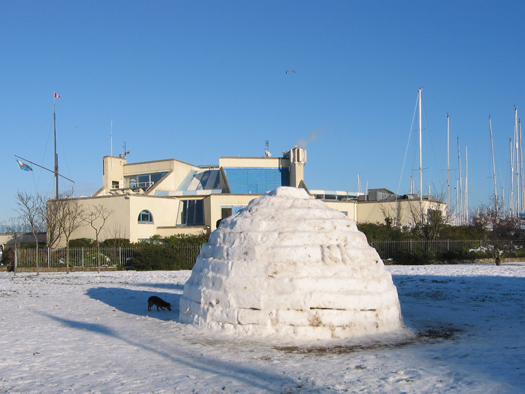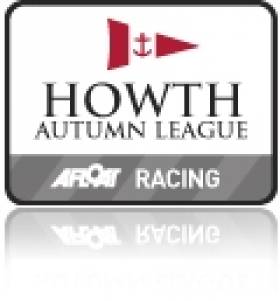Displaying items by tag: igloo
Controversy Over New Howth Building
A new building has appeared overnight beside Howth Yacht Club during the Christmas period, and a row is simmering as to whether it has full planning permission. Sailors Declan MacManus and Robert Kerley, leaders of the construction team, anticipate receiving full retrospective planning permits. In fact, they hope that it will soon become a listed building, as it is a cool re-creation of the famous monastic beehive cells on Skellig Michael, and is also an important interpretation of the classic Inuit vernacular style traditional to Arctic regions.
With Ireland now expected to enter a new mini-Ice Age by 2035, they also anticipate that the Government's Emergency Response Committee will wish to retain them as consultants for future building projects. The new house is tastefully if sparsely furnished with IKEA's Fishbox Range, which is being introduced for 2011. It provides an unusual and comfortable venue to add to Howth's many bustling hospitality hotspots.
A representative of the local planning authority has reportedly said that they are putting the matter of planning permission on ice until after the holidays, and they expect that in due course the matter will simply melt away to provide an Irish solution to an Irish problem.

Howth YC is concerned about this new building which has suddenly appeared – without planning pemission - beside the clubhouse

Fully furnished, the new building is the centre for the training of a team of unique Mini Jack Russell Huskies
Night in Igloo Raises funds for the RNLI
Brothers Rory (37) and Eoin (36) O'Connor spent last night (Thursday 2 December 2010) in an igloo on Duncannon beach in county Wexford to raise funds for RNLI lifeboats. The pair went into the home-made igloo at 8pm last night and emerged this morning at 8am.
The igloo was built on Duncannon beach by local men Patrick Byrne and David Walsh following plummeting temperature and heavy snowfall in the southeast. On hearing of the structure, Rory and Eoin approached the men to ask if they could spend a night in the igloo to raise funds for RNLI lifeboats. With their agreement they made plans to spend the evening in the ice and brought with them special clothing and sleeping bags to brave the arctic temperatures.
Rory is a volunteer lifeboat helm on Fethard-on-Sea D class inshore lifeboat in county Wexford and when the temperatures dropped on the south-east coast he and his brother Eoin decided to do something to raise funds for the RNLI and to remind people that lifeboat crew go out in all types of weather.
Speaking from the igloo at the end of their night Fethard lifeboat helm Rory said "We are honestly delighted with the response from the public to our sleepover. People were dropping by the igloo all night to say hello and drop some money in the bucket. We even had a local pub send down some hot whiskeys to keep us warm. It was actually quite comfortable and we even managed to get a good night's sleep."
The brothers emerged this morning in good spirits and were looking forward to a cooked Irish breakfast on the beach.
Rory and Eoin have set up a donations page HERE. The brothers have so far raised over €1,500 for the lifeboats.

A night in the cold has produced 1500 Euros so far!





























































